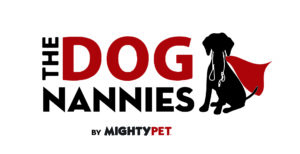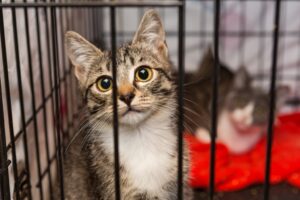Searching for a Cute Companion? Look no Further than Hamsters, Gerbils, and Guinea Pigs!
Tiny, fluffy pet rodents make adorable additions to your family. They don’t take up much space, are easy to care for, and are plenty of fun. Many are quite active and social, giving you a precious pet to love for years. However, with so many cuddly creatures to choose from, it can be difficult to select which is best for you and your family. Today we are going to explore the world of hamsters, gerbils and guinea pigs to help you decide which is the best small pet for you.
On their surface, all of these fuzzy little animals may seem similar, but each requires different things to fully thrive. Our best recommendations for each pet are outlined in this article, but further research is always helpful to ensure your pets get the best quality care possible. Some of the care requirements overlap between these pets, while others are specific to breed or species. Always consult the petcare experts at Mighty Pet or your local pet store to make sure you have all the details you need to give your pet proper care.
This article will focus on caring for the most common pets in the rodent family. Despite what the name might suggest, these pets are far from pests and in fact make loving and social companions with the right care.
Which Small Pet is Right for Me?
The world of pet rodents is varied and diverse. Each pet has its preferences. Some are solitary, while others need lots of company. Some are nocturnal, while others are active in the daytime. This article breaks down the intricacies of the three most popular small pets: Guinea Pigs, Hamsters and Gerbils.

Guinea Pigs: Happiest in the Herd
First, let’s clear up a few common misconceptions about guinea pigs: they aren’t from Guinea and they aren’t pigs, but they are still super cute! Guinea pigs are members of the rodent family, but are actually more closely related to porcupines than hamsters and gerbils.
Guinea pigs are highly social animals that actually live in herds in the wild. While most of us don’t have space for an entire army of guinea pigs, you can help them stay happy and socially stimulated by giving your piggy a companion.
This is the largest pet on today’s list, growing from 8 to 19 inches and weighing between 2 and 3 pounds. Naturally, this means their cage requirements are a bit larger than other rodents’. The Humane Society recommends keeping your guinea pig in a cage that is, at minimum, 7.5 square feet, or 10.5 feet if you are raising two guinea pigs. More pigs means more space, so if you’re planning on raising up a herd of your own, remember they’ll need plenty of room to run and play.

Guinea pigs’ coats are varied in length, color, and patterns, but they’re all adorable in their own right. Their personalities are varied, as with any other animal, but they are known to be generally laid back and relaxed. Keeping your guinea pig happy with a companion, a clean cage, and enrichment activities like chew toys and tunnels will ensure they keep their pleasant personalities.
Guinea pigs need constant access to hay, pellets, and water, as well as plenty of fruits and vegetables to help them get the minerals they need. It’s important that their diet is largely hay and grass, as their digestive system needs lots of fiber to function properly.
Hamsters: Independent and Energetic
Hamsters are in a diverse family of tiny rodents that includes many common species you’d see in your backyard in North America. This makes hamsters genetically closer to voles, rats, and mice than to guinea pigs. However, genetics isn’t the only thing that makes hamsters unique in their care and comfort preferences.
Being so small, pet hamsters have a lifespan of only 1 to 2 years, but they can live up to five with exceptional care. Their small size and hardy nature mean they can live comfortably in a 15-20 gallon enclosure. However, more space is always better for your pets. Make sure your hamster cage is thoroughly escape-proof, because these tiny escape artists can always sniff out an exit. Cages should also be well ventilated to keep the air quality healthy. In addition to food and water, make sure you provide hamster toys like hamster balls.

Hamsters are solitary animals in life, and are therefore best kept as individual pets. Unlike the other animals on this list, hamsters can be exceptionally territorial and do not share enclosures with others well. They can be quite aggressive when crowded in a single enclosure. This makes hamsters a good pet for those looking for only one companion to care for.
Hamster personalities can vary, particularly between hamster breeds. Some are docile when handle, while others may bite. Since they can be temperamental, it’s wise to wear gloves and use caution when interacting with a hamster. If they don’t enjoy being held, don’t stress them out: return them to their enclosure. With consistent exposure to friendly people, however, some hamsters warm right up and become cuddly pets.
These tiny rodents are also nocturnal, and will therefore be most active at night. You don’t want to be woken up from your sleep, so offer your hamster the same courtesy and do your best to put their cage in a low traffic area that won’t be disturbed. Be aware that their nocturnal activity can make quite a bit of noise, and keep in mind that given their sleep schedules you may have to wait until nighttime to watch or interact with your pet.
It’s a common misconception that hamsters make a good ‘beginner pet.’ However, hamsters don’t make great pets for young children or first-time pet owners because of their tendency to bite if not handled frequently or properly. Even well domesticated hamsters might suddenly bite if they are sick, handled roughly, or have been held too long and are ready to be let go. They need lots of handling to stay docile and still might slip up from time to time given their natural instincts.
Gerbils: Your Tiny BFFs
Gerbils are closely related to rats and mice, but are in a different grouping than hamsters. This makes gerbils closer cousins to Asian, Australian, and European mice and rats. This grouping is similarly diverse as the hamster’s but is mostly made up of animals in the Eastern Hemisphere who fill similar roles in their respective ecosystems. The gerbil lifespan averages 3-4 years.
To most, the differences between hamsters and gerbils might seem superficial, but take a closer look at gerbils vs. hamsters and they become clear. Gerbil faces tend to be pointier, like mice, while hamsters are rounder with big cheeks to store food. Hamsters have short stubby tails and gerbils have long tails. Gerbils are also more athletic, with longer limbs and a leaner build in general, while hamsters tend to be quite plump with shorter limbs. Both are active pets, but gerbils are able to do more agile maneuvering.

However, the biggest difference between hamsters and gerbils is their temperament. Despite their adorable cheeks, hamsters are shy and territorial. Gerbils as pets are friendly, highly social animals that are much less likely to bite. They do well in a pairing or small group and will rarely lash out. Gerbils are also active during the day meaning they can hangout and play while you’re up during the day, and rest during the night–a.k.a, no squeaking wheels keeping you up past your bedtime!
Each gerbil needs a gerbil cage with at least 10 gallons of space. With each gerbil you add, you will need to add another 10 gallons–so a pair of gerbils will need 20 gallons, and so forth. In their cages, they will need a consistently filled water bottle, spaces for nesting, sand baths, and an exercise wheel. Gerbils love to climb, jump, and run, so provide them with climbing platforms and toys to keep them active. As with hamsters, ensure that gerbil habitats have proper airflow, but are secure.
Bring Your Furry Friend Home Today
We hope you enjoyed getting the details on three of the most popular small pets. If you’re curious about bringing your own small pet home, or just have questions about which one is right for you, come visit Mighty Pet in Marinette-Menominee! We have everything you need to bring your pet care dream to life.



